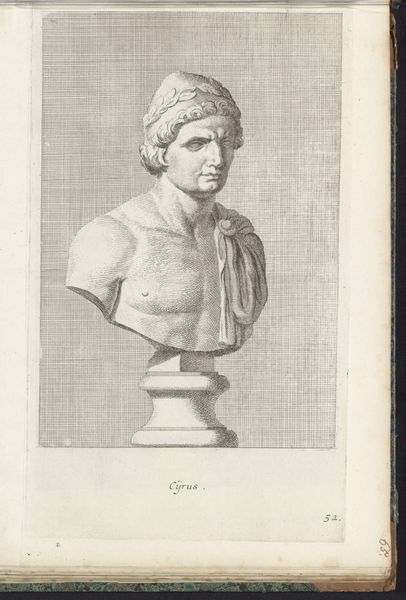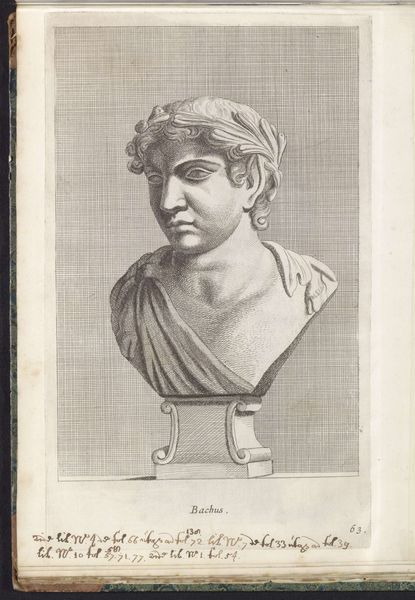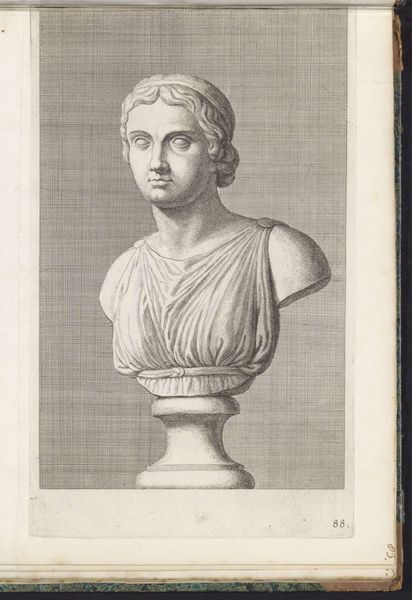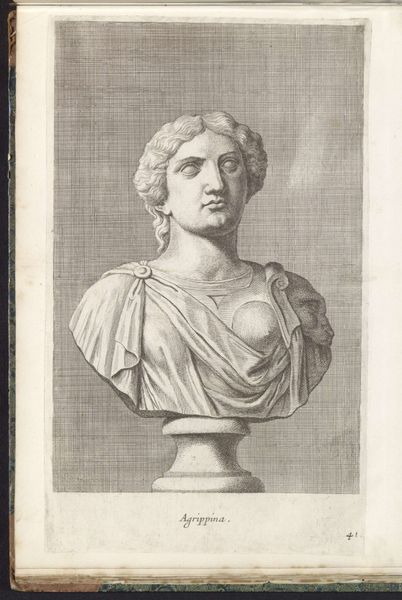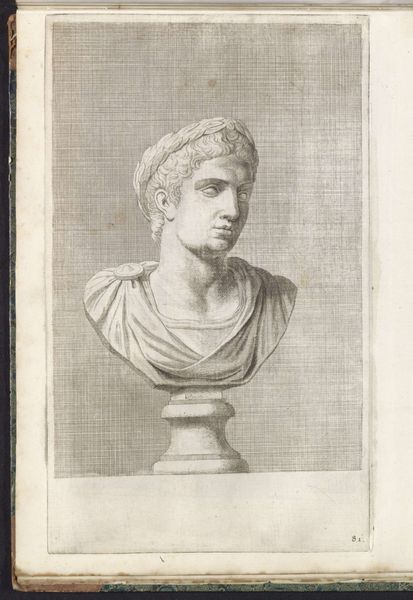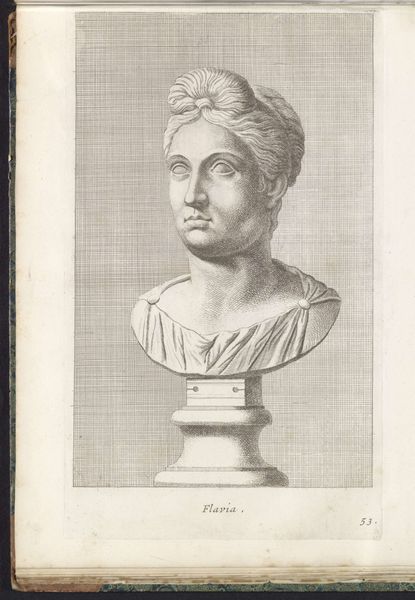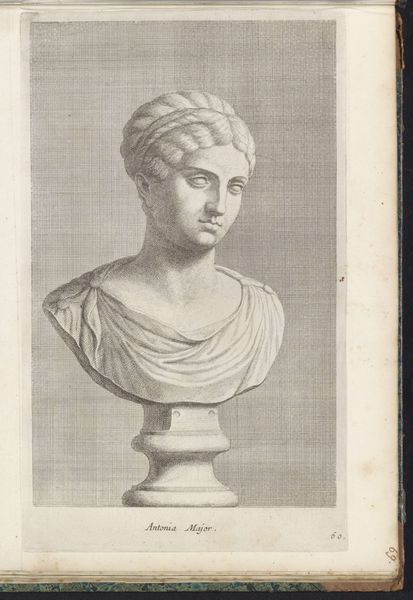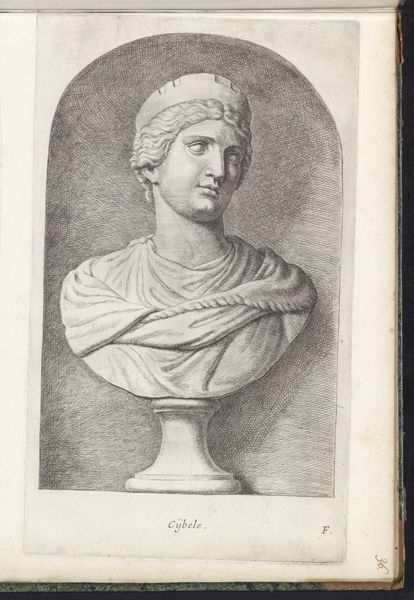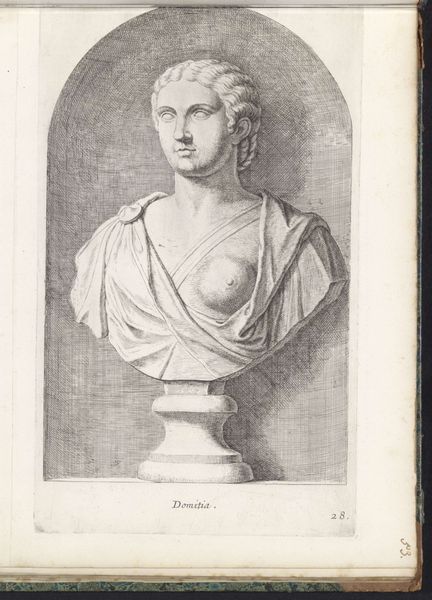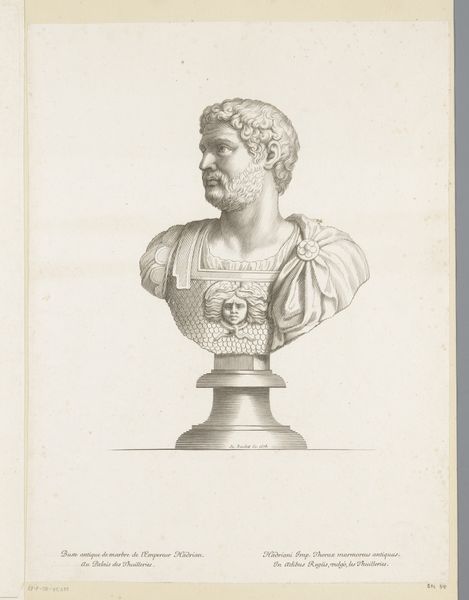
drawing, print, paper, ink, engraving
#
portrait
#
drawing
#
baroque
# print
#
classical-realism
#
paper
#
ink
#
engraving
Dimensions: height 325 mm, width 196 mm
Copyright: Rijks Museum: Open Domain
Curator: Before us, we have Hubert Quellinus's print from 1646-1670 titled, “Buste van Pan,” now housed here at the Rijksmuseum. It's an engraving on paper, depicting a sculpted bust of the Greek god Pan. Editor: Immediately, what strikes me is the delicate yet masculine rendering. The subtle shading gives the figure a pronounced weight, and that head is cast slightly downward...there is almost a contemplative or subdued atmosphere to the figure which is unexpected. Curator: That's an interesting reading, especially when we think about the context in which Quellinus was operating. He lived during a time heavily influenced by classical ideals, as this work suggests but there was, in parallel a rise in scientific naturalism. Representations like these offered not just aesthetic enjoyment, but they were studies meant to reflect deeper meanings and intellectual pursuits that had public reception in mind. Editor: Yes, the intersection of scientific and philosophical ideals in the artistic sphere is essential for how these subjects come alive again as a representation. I keep circling back to what that gaze really means in relation to Pan. I think of the freedom and ecstasy Pan is meant to represent—instead, this work invites the audience to see more human aspects in something they probably associate with purely mythical, sensual pleasures. Curator: It's a common artistic conceit; this balance of humanism with symbolic character. The medium too is integral to that duality. This is a print; its relative ease of distribution allowed such an image of Pan to spread far beyond any aristocratic owner to the broader public. So even if he has the traditional faun's horns, you could still have a bit of Pan for everyone! Editor: True, by disseminating an idea of classicism so broadly, it perhaps helped normalize figures that would be ‘othered’ from social ideals. Curator: A lot to consider when a closer look reveals the work, time period, and cultural trends, as well as that sense of subdued grace that it has as a viewing subject. Editor: Indeed. From its social function to how it frames classical archetypes, this depiction is just one perspective on how art changes how people interpret historical narrative, as well as lived experience.
Comments
No comments
Be the first to comment and join the conversation on the ultimate creative platform.
